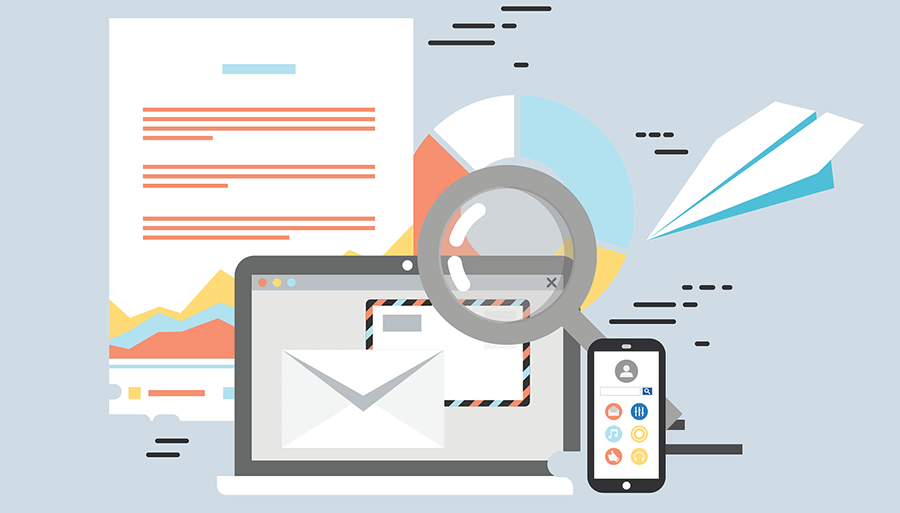
With technology and selling trends, B2B marketing best practices have shifted rapidly over the last several years. It is all about digital marketing and sales these days, with a truly global market. With the right digital marketing, your company can capture B2B sales like never before. To accomplish that, you need to understand what these B2B marketing best practices are, and how to put them into action.
Our guide to B2B digital marketing best practices is designed to help your company fine-tune its content and marketing strategies. Our expertise is focused on business to business sales and marketing, as it calls for different practices from business to consumer. Read on to learn all about how you can make the most of your B2B marketing!
 What is B2B Marketing?
What is B2B Marketing?
With B2B (business to business) marketing, your business is selling goods or services to another business. They are usually represented by a buyer or a team. Because they are a business too, they are expecting straightforward information rather than a complicated sales pitch.
Good B2B marketing depends on the premise that businesses care about return on investment, more than what happens when a consumer makes a purchase. It also reflects the increased complexity of a B2B sales cycle. B2B sales cycles typically involve more decision makers, taking longer to complete.
Key B2B Marketing Best Practices
In the world of B2B sales and marketing, competition can be fierce. It is a carefully honed strategy. Following best practices ensures your company comes out on top. While each company should tailor its strategy, these key B2B marketing best practices are a good place to start.
Move to an online platform
B2B marketing is largely digital these days. According to research from Gartner because digital information is so readily available, B2B buyers only spend about 17 percent of their buying time meeting with suppliers. The majority of the time is spent researching independently online.
Your company needs to be online. Have your online presence work for you. Traditional sales staff will have very little opportunity to directly influence buyers’ decisions until the customer has already decided to go ahead.
Know your marketing goals
Of course, every B2B sales goal is to sell more ultimately, but there are often smaller steps to take in between. You may even have different goals for different channels, such as driving more traffic through Facebook versus getting emails from your blog. It is a good idea to spend some time identifying what success looks like to your brand.
You may want to increase your overall reach, improve leads, convert more customers or gather more customer information. Some brands consider increasing brand awareness a good goal for some campaigns, or increasing community engagement as a plus. Make sure each goal is attainable, and measurable.
These objectives will help keep you and your marketing team accountable, showing return on investment. They also help guide your strategies, platforms, and budgets. Knowing your goals helps you know what metrics to track (more on metrics later!), so you can focus on the right data.
Understand your target customer
Business to consumer marketing often begins with creating a buyer persona. You can use the same strategy in B2B marketing. Best practices include a deeper dive into who your business customers are and what they need from you.
Understanding your target customer starts with looking at whom you already have. Take a look at your best customers and try to find a common thread. It could be their location, their industry, or that they’re using your products to solve similar problems.
From there, you can build out an idea of who your target customer is. Where do they spend their time online? What questions do they have? And what are your competitors doing to attract them?
These details and other information about your target market should come from research, not just a gut feeling. You can talk to your customers about what they want and what might be missing from your current offerings. Surveys, phone calls, and other information-gathering helps fill in the details of a customer persona with real-life data. You can even look at the questions people ask on social media, or what issues the support team hears about the most.
A B2B digital marketing best practice is to remember to stay human and market to the people behind the organization. Yes, you are selling to a business, but it is individuals and teams within that company making the decisions. The buyer persona process helps ensure you are connecting on a human level.
Understand the B2B buying cycle
With the focus on digital research and sales, and the number of people involved in a B2B sale, the cycle can be long and complex. The same Gartner research indicates that buyers go through six stages:
- Problem identification
- Solution exploration
- Requirements building (deciding what they need the purchase to do)
- Selecting a supplier
- Validating the choice (making sure it is the right answer!)
- Creating consensus
The B2B buying journey travels through all of these stages, often in a looping, unpredictable way. As a B2B marketer, your strategies, and tactics need to work to advance your customers through these stages. The more information you can provide, and the more accessible it is, the better your potential customers can navigate the buying cycle.
 Choose marketing tactics
Choose marketing tactics
Based on your goals, and your target customer persona, you can move on to choosing your ideal B2B digital marketing strategies. There are many B2B marketing best practices and tactics. We will not list all of them, but will focus on the most common approaches. Of course, your company might be more successful with another tactic or a combination.
Above all, and on top of any other tactic you use, your website should be well-designed and full of useful information to keep your online presence strong. A website is frequently the first impression potential customers will have of your business. Make sure it is a good one by sharing a lot of high-quality information. There are also a ton of great tools for businesses to help you achieve your goals, many of them completely free.
B2B content marketing best practices typically include blogging. When your company keeps an updated, consistent blog going, you should see improvements in organic visibility and inbound traffic. Focus on topics of interest for your target customers, as detailed through your persona research.
There are countless other ways to include B2B content marketing best practices in your strategies.
Content marketing
It covers countless options, from videos about your products to longer e-books, and white papers. Buyers use this information in their decision-making process, so focus on the details that will help them through the sales funnel.
Social media
Social media is another place you can market, as B2B customers increasingly use social platforms for research. They may check out your brand’s Facebook, Instagram, or LinkedIn while trying to decide if your company is the right partner. Take the opportunity to meet them where they are, engaging and interacting on these networks.
Remember that social media content is usually shorter and more attention-grabbing than long-form content. You can use these platforms to tease blog posts, advertise upcoming events and webinars, and share behind-the-scenes details and industry news. This kind of information is enticing but not overwhelming, perfect for social media marketing.
Paid media
Web display advertising has some room in B2B marketing, though content marketing brings about more organic traffic. Display ads are at the top of the B2B sales funnel, providing an opportunity for people who may be interested to learn more. With current technology, you can ensure your display ads show up in contextually relevant areas, which helps attract the right demographic.
Email marketing
Finally, another popular option is email marketing. Email has long been a B2B digital marketing practice, with newsletters, notifications and announcements, and promotions reaching customers. It is important to customize email marketing as much as possible, so each recipient gets a message that is relevant to their persona and needs. Email list segmentation helps further isolate messages appropriately.
Focus on lead quality
It might seem like the more leads you have, the better you are doing. And having plenty of people to market to, feel good! But if your leads are not high quality, your B2B marketing efforts may go to waste. The quality of leads matters just as much, if not more, than the quantity.
Unqualified leads take up a lot of time to sort through and address, but do not fit into the ideal customer persona. The odds of these leads converting into anything useful are low, no matter their numbers. That is why it is significant to focus on qualified, quality leads.
Marketing automation is one method for ensuring leads are worth following. Marketing automation software gauges how prospects interact with digital marketing assets like webpages, ads, and social media content. For example, if a certain piece of content marketing is generating low-quality leads, you can adjust that content or replace it based on the data from your metric.
You can also fine tune that content to make sure you are attracting the right kinds of prospects. As we hope you have noticed from all of these tips, B2B marketing is all about providing information. If you are providing clear, relevant content, it should be easy for potential customers to figure out if your company is a good fit for their needs. If it is not, they will not bother sending a message, and thus will not become a low-quality lead.
The more work your company does to improve and optimize its B2B digital marketing, the better quality your leads will become. And, with more quality leads, you will see a positive change to your profits.
 Measuring Your B2B Marketing Best Practices
Measuring Your B2B Marketing Best Practices
Metrics are a key piece of B2B digital marketing best practices. Unless you can accurately analyze and assess your strategies, you cannot tell if they are working well. With metrics, you can continually optimize your marketing to get the best results.
Most social media sites have built-in metrics for business accounts. You can see who is clicking on what content, and whether they move to your website or otherwise take action toward a sale. You can also keep an eye on reviews and messages on these platforms, to ensure that your company is maintaining a good reputation.
It is also important to look at your website metrics. Make sure the content is showing up on search engine results pages under your chosen keywords. And, keep up with changing trends in the industry, so you can adjust your keywords and your content marketing as needed. Simple tools like Google Analytics can show you if visitors are leaving quickly (the bounce rate), to give you an idea of where you need to intervene.
Get Help With B2B Marketing
Occasionally, the best way to put B2B content marketing best practices into place is with a bit of help. We are digital marketing experts, and we are happy to help you make the most of your web presence. You can rely on David Taylor Digital for all aspects of web design and strategy development. From search engine optimization to creating content and communication strategies, we will elevate your B2B marketing to capture more lead and generate more sales.
It does not matter if you are brand new to B2B marketing or if your company has an established web presence. We are here to improve upon your foundation, audit your practices to make sure they are aligned with your goals, and partner with you to nurture leads, new and old. Contact us to learn more about B2B marketing and how we can help you make yours successful. You can email [email protected] or call 973-317-8765.
 Choose marketing tactics
Choose marketing tactics Measuring Your B2B Marketing Best Practices
Measuring Your B2B Marketing Best Practices